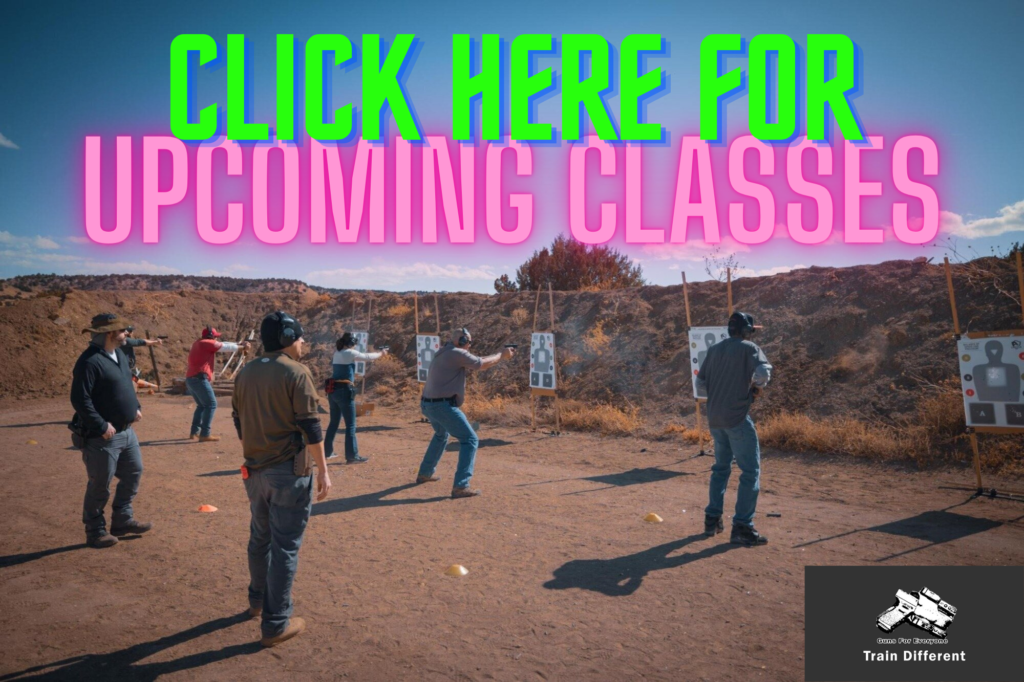A few months ago we posted an article about some self defense myths. We’re going to cover a few more, specifically myths related to ammunition.
Since the dawn of web 2.0, the gun world has seen a very important shift away from folklore (or Fuddlore if you prefer) and to fact based education around guns. But after 10 years of Free Concealed Carry Classes, we have encountered a lot of people who still believe things about guns that are not based on fact, or are grossly misunderstood. Today we’re going to attack a few of those myths.
Myth 1: Carrying a bigger caliber is the best way to ensure that you will stop the threat.
The first thing to address about caliber is that in general, handguns are pretty terrible at stopping threats, IF you compare them to rifles and shotguns. Handgun rounds are moving much slower than rifle calibers and the differences in damage between handguns and rifles are drastic. The true differences in performance between common handgun calibers are very small. Data clearly shows this. For instance, more than 80% of people shot with 1 round of handgun ammunition survive. For those shot with a rifle caliber (excluding .22lr), the survival rate after 1 round drops to just over 60%.
We carry handguns because they are efficient. It’s impractical to carry a rifle everywhere. A handgun is an acceptable trade off to meet my self defense needs. The way to maximize the effectiveness of a handgun against a threat is to put multiple rounds into the vital areas of a bad guy. One round of .357 is never going to do as much damage as 3 rounds of 9mm. For most people, a smaller but adequate round is a better choice than a bigger, harder to control caliber. There are some genetic freaks out there who can shoot a large caliber just as fast as something like a 9mm, but most people cannot.
In a self defense fight, efficiency is extremely important. Being able to shoot fast AND accurate improves your chances of stopping the threat with multiple rounds landing in vital areas. This is one of the reasons that most industry professionals choose 9mm as their primary handgun round.
Myth 2: I carry a .22 because it will ricochet inside the body.
This is the kind of myth that makes me laugh when I hear it. One common source for this myth is mafia movies. It is true that a .22 is less likely to penetrate all the way through a person but there is no factual evidence to support that it ‘ricochets’ around inside the body like a pinball. When a bullet hits a body, it immediately starts to deform and in many cases begins to fragment into smaller pieces depending on what it hits. These fragments can change direction but bullets do not carry enough energy to “bounce around” inside a body and the body is not strong enough to contain the kind of energy that would be needed to accomplish this.
Bullets are extremely unpredictable once they start hitting flesh and bone and there are plenty of examples of strange ballistic behavior. But the myth of the ricocheting .22 is no reason to carry this caliber or to believe that it is somehow more deadly based on this mythical behavior.
…if you watch videos of people being shot in the real world it may be easy to mistake human reactions to being shot for “knockdown power”.
Myth 3: “Knockdown power”
This myth is related to the one above. I blame a lack of education about physics and also a lack of critical thinking for this myth. Handgun bullets (or rifle bullets for that matter) lack the energy to knock anyone down. How do we know this? A basic understanding of force tells us that whatever energy pushes an object away exerts the same amount of force in the opposite direction. For a bullet to knock someone down, the person who fired the round would also have to be knocked down.
This myth is common in movies but if you watch videos of people being shot in the real world it may be easy to mistake human reactions to being shot for “knockdown power”. When we see a video of someone falling down after being shot, there is one of two reasons for this. The first is a physical reaction to the trauma to certain organs, the second is a psychological reaction to being shot.
A physical reaction comes from major damage to the brain, the spinal column, or any part of the body responsible for keeping us upright including the leg bones, pelvis or spine. When there is damage to these body parts, the body loses the ability to stay upright. Sometimes the damage is severe enough to shut down all control and a body will fall quite dramatically as a consequence. Depending on where the person’s balance is in that moment, that may result in that person falling backwards. This is not the energy of the bullet blowing them backwards, it’s a loss of control of the body and gravity doing it’s work.
A psychological reaction is less predictable and includes the person mentally processing that they have been shot or shot at, and responding by falling to the ground. There is extensive study on this topic including why falling happens to be one of the possible reactions. But what is clear is that the reason for the fall is the brain sending signals to the body to fall to the ground, not the energy of the fired round moving the human body.
These are a few of the common myths we hear in our classes. There are many more and we will continue to address them in the future. Part of understanding self defense is dispelling myths like these so that we understand our tools and tactics better. You can learn more at our classes by visiting our website at www.concealedcarryforfree.com.

